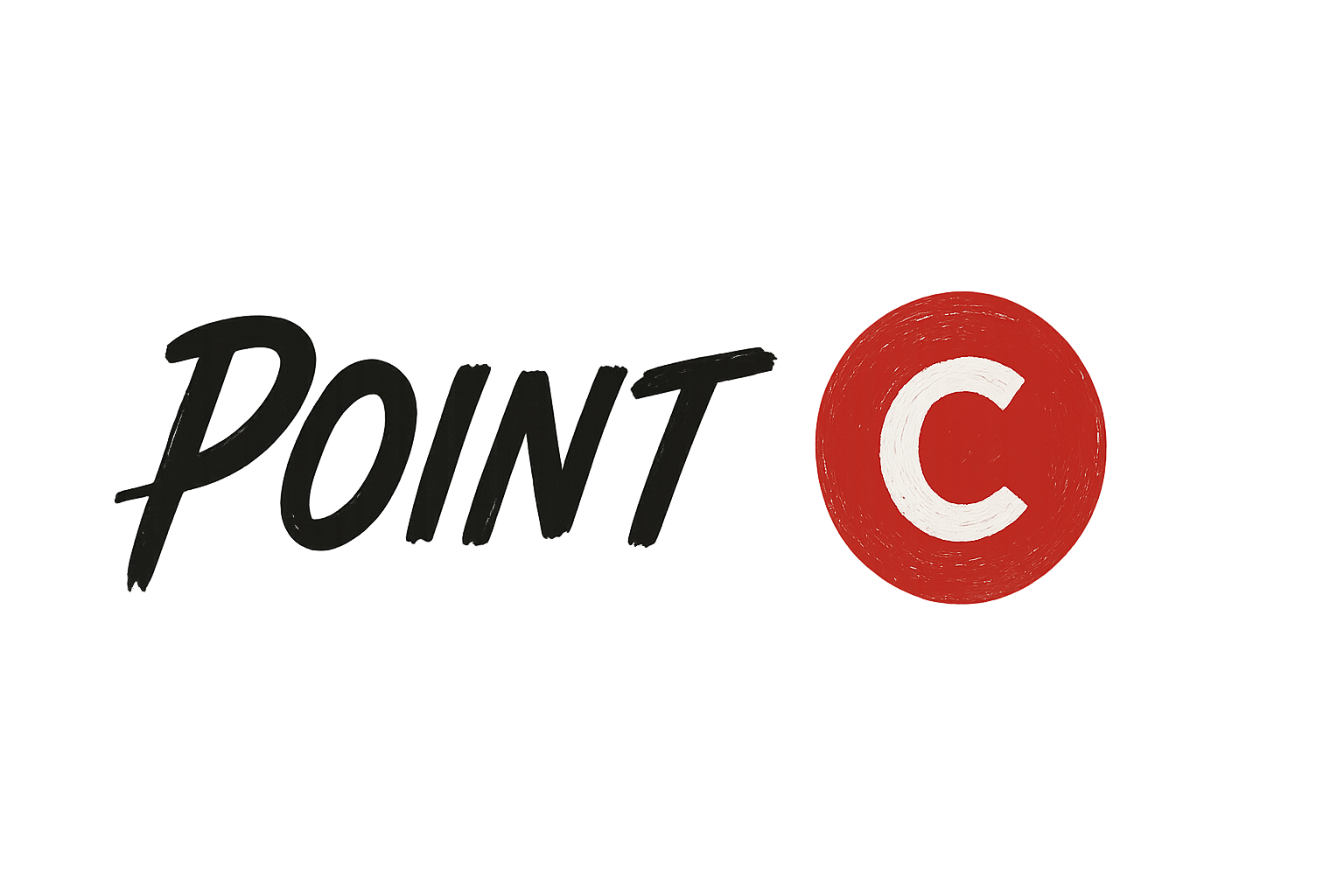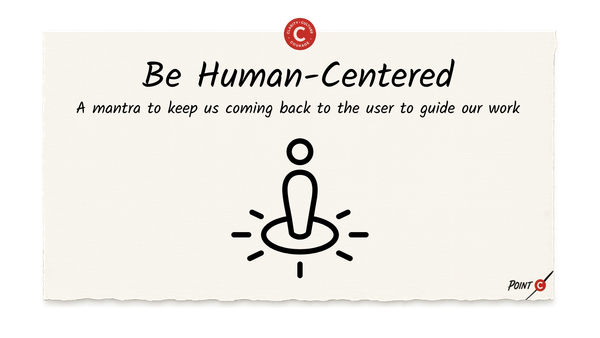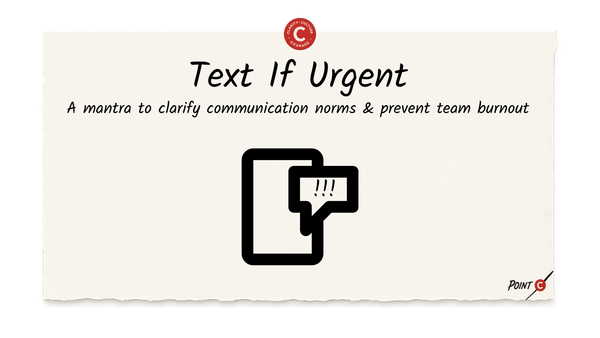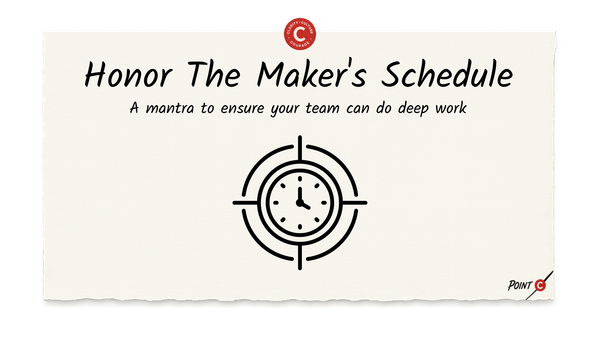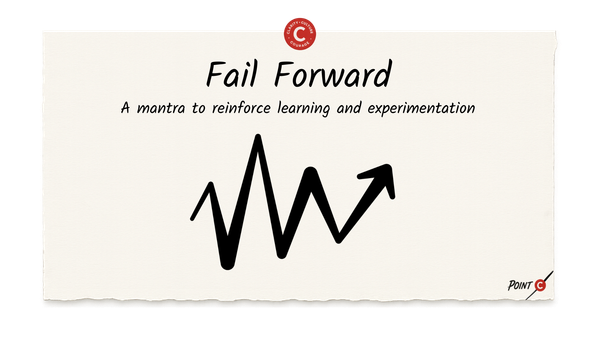The Team Gift Exchange
A ritual for regular team feedback
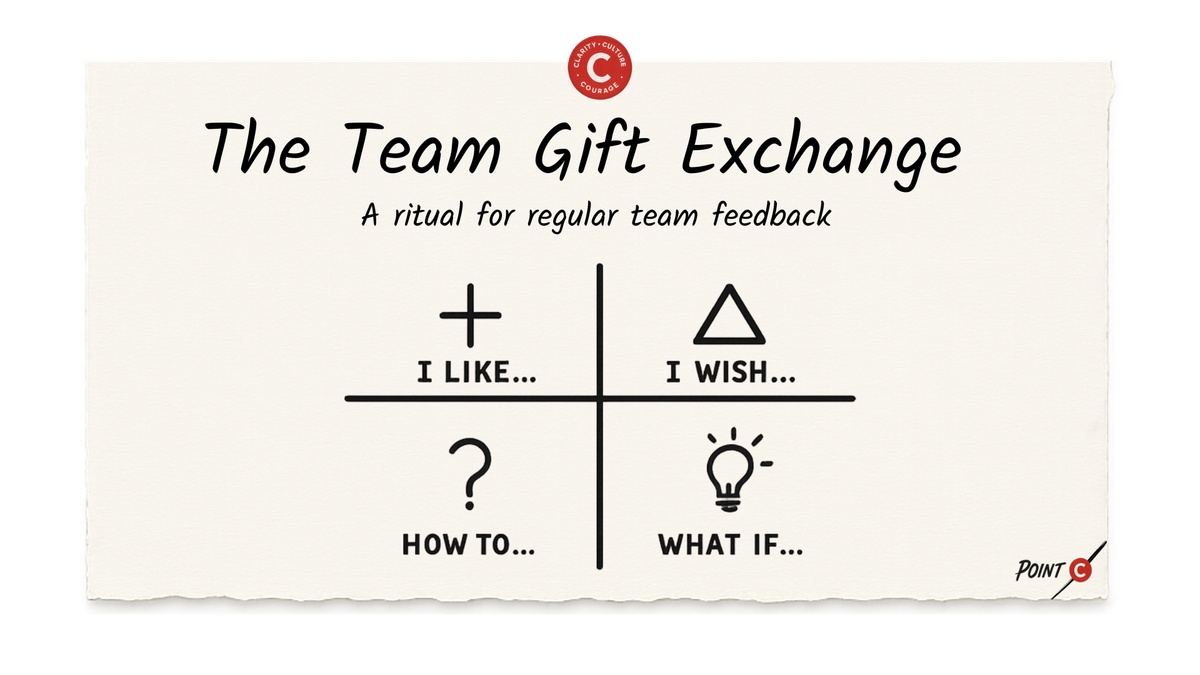
Last week in The Idea Bucket, I introduced a powerful one-on-one feedback ritual: The Gift Exchange — a simple practice to reinforce the mantra that feedback is a gift, not a demand.
But as a leader, you need feedback from more people than you can meet with individually. You need a scalable way to hear from everyone — without creating a culture of performative feedback or action-item overload.
That’s where this week’s ritual comes in: The Team Gift Exchange
But first, let's pause for a Coaching Moment:
A Coaching Moment
My last post generated a great question from a client: How do you adapt The One-on-one Gift Exchange to a virtual environment?
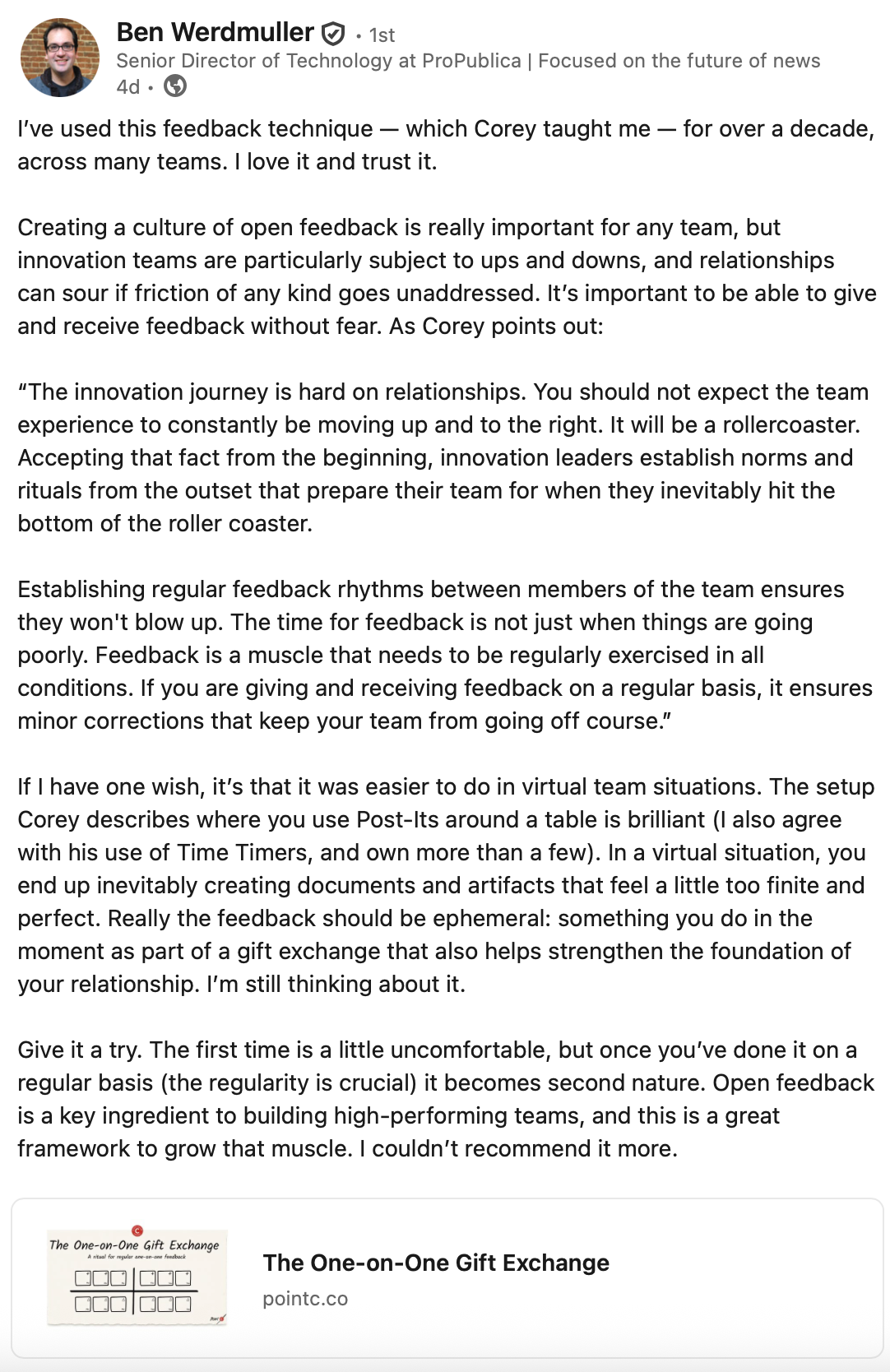
This is a great question because it really gets at the nuances of what we're trying to do with this ritual compared to the patterns we typically fall into when performing feedback at work. This ritual is very much about being present and not about documentation and tracking. When we do feedback in a virtual environment, it raises the opportunity to leverage the power of digital tools to document the feedback exchanged and track it over time. Resist this temptation.
When doing feedback in a virtual environment, I’ve found that staying physical with post-its and sharpies is still the best method. The tactile experience of writing feedback makes it both more focused and less precious. For some reason, digital pushes our mindsets towards documentation, where this exercise is really much more about being fully present and embracing the ephemerality of the moment. When this exercise is practiced while fully present, you’ll have no problem viscerally remembering what you hear and feel from the moment. Post-its help you do that.
When sharing your feedback, you can just hold the post-it up to the camera. At the end of the session, you can always snap a photo of your 12 post-its and drop it into the chat so that your partner can read and reflect on your gifts afterwards. Give it a try and let me know how it feels: theideabucket@pointc.co
Now, on to this week's ritual.
Introducing: The Team Gift Exchange
One-on-one feedback is essential and powerful. You can and should take the time to do it on a regular basis with your most crucial connections up, down, and laterally. But it does take time and the time of a leader is finite. So how do you create feedback rituals at the group level that most efficiently fosters the free flow of information?
That's where The Team Gift Exchange comes in. It's a simple yet powerful ritual that enables you to hear all voices in the room while preserving the mantra Feedback is a gift - not a demand.
Here's how it works:
1) Prepare the space with the group feedback grid: We're going to be collecting feedback on the topic at hand from everybody in the room in four different categories:
- I like... (What's working)
- I wish.. (Areas for improvement)
- How to...? (Questions)
- What if...? (Ideas)
In a physical environment, I hand out sharpies, packs of 4 different colored post-its to each person, and draw the following grid on a giant whiteboard:
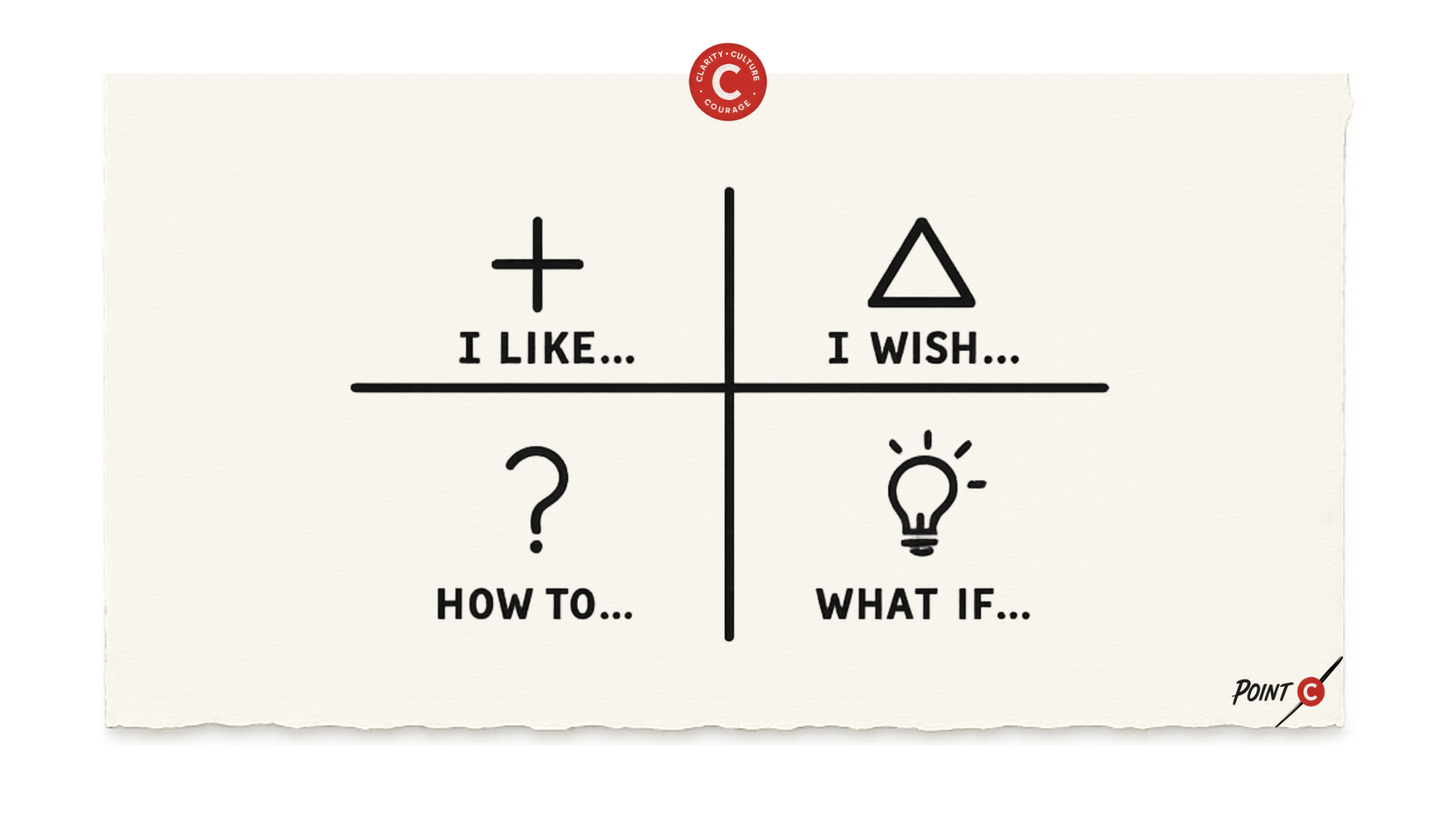
In a virtual environment, I prepare a Miro board that has one workspace per category and has everyone's names with 3 blank post-its beside it per category:
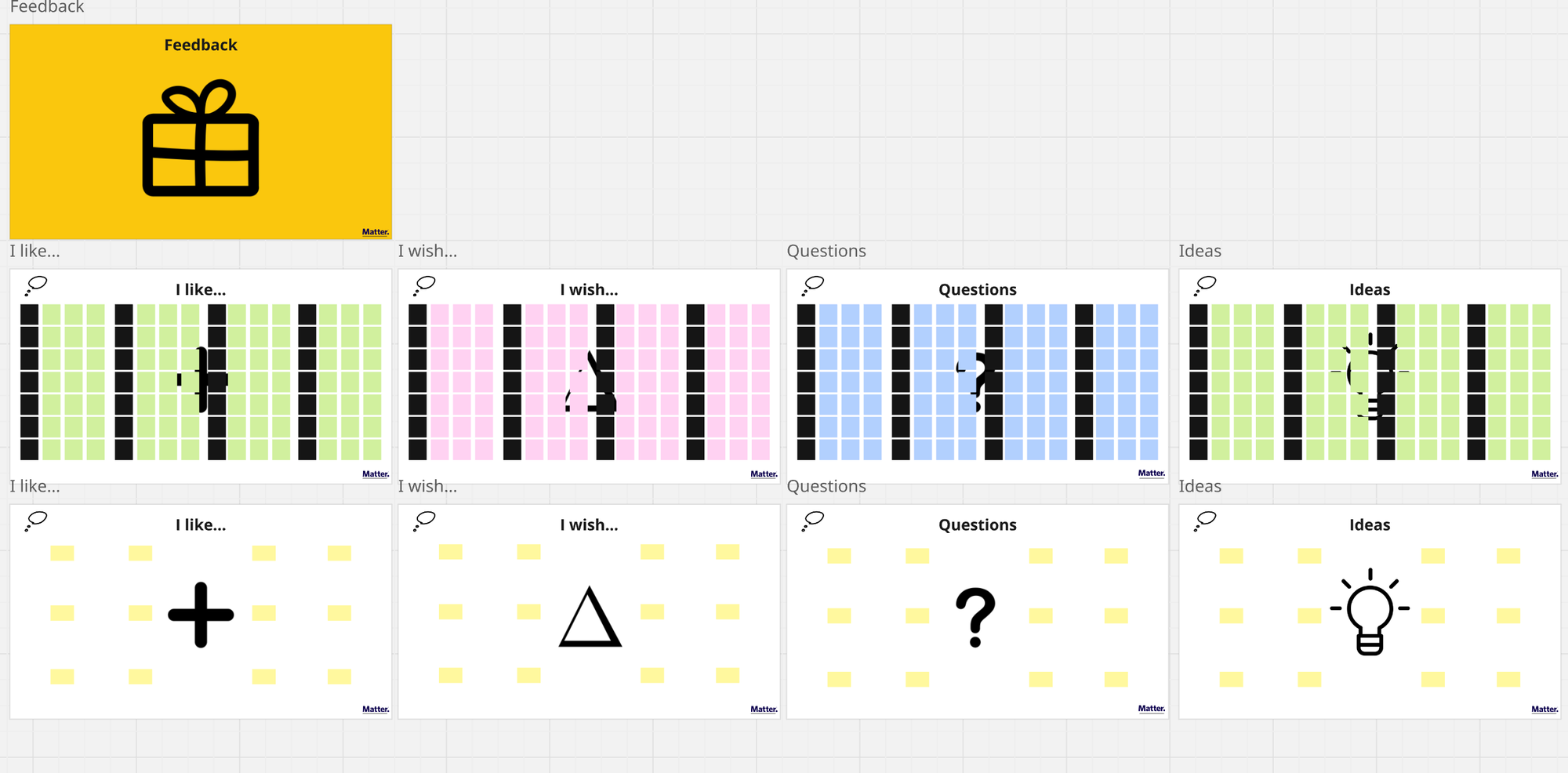
2) Set the context with the group: Establish that we're going to be doing a group feedback ritual reflecting on ______________. The question we are reflecting on varies by context. It could be how we are performing as a team, it could be reflecting on how we just ran a certain project, it could be feedback on a strategy presentation that we just heard. There is no right answer here but we all need to be on the same page for what exactly it is we are giving feedback on.
3) Reiterate the norms: Feedback is a gift - not a demand. This is mostly a listening exercise to make sure we have a free flow of information and hear all voices. There is going to be conflicting feedback and that is OK. We trust that we will listen hard to all of the feedback and we also trust the designated owner of that lane to make decisions about what to implement and what to ignore for now. We expect to hear all voices on all categories because your feedback and ideas are valuable. Each person, on their own in silence, is going to write three post-its per category and will then verbalize them. You must fill out all categories.
4) Set the timer: Put 10 minutes on the Time Timer for everyone to fill out their 12 post-its in silence. Make sure you designate which color post-its will represent which category. Remind people to put their initials in the lower right corner and the category in the upper right corner. There should only be one thought per post-it, not a list, since post-its will later be grouped by theme.
5) Share the feedback verbally: Start with the first category (I like...) and have everybody, one at a time, verbally headline what they wrote. This is primarily a listening exercise for everyone, especially you. In physical spaces, I have people line up and populate the whiteboard as they share. In virtual environments, I zoom in on the whiteboard and call people's names to share as we look at their post-its. If people are over-explaining their feedback, remind them to headline it. Once you are done with one category, move on to the next until you have completed all four categories.
6) Say "thank you": The ritual ends by simply saying thank you. This is not the time to take action on the feedback or to debate it. We've all listened to the feedback and we will trust that it has been heard.
7) Optional - Synthesize & Group The Feedback: Afterwards, on your own, take a moment to sort and group the feedback in each category to distill themes. (This is where a virtual environment reaps some benefits because the post-its are more legible, transportable, and copyable. In my Miro board above, the 4 white boxes with large yellow post-its is set up beforehand for synthesis.)
8) Optional - Share the Synthesis: While not necessary, it can be helpful to close the loop with the group by sharing back your synthesis of the feedback and articulating any actions you are going to take based on what you heard. This is optional and should be situational. We do not want this to be an expectation every time we have a group feedback session because we want to prioritize the free flow of information over the burden of organizing, tracking, and acting on the feedback. Always prioritize listening over documentation.
The Power of The Team Gift Exchange
This simple framework and ritual can unlock so much information from your team in a relatively short amount of time. In addition, there are other massive benefits, including:
- Hearing all voices: Great innovation leaders create the right norms to ensure that all voices in the room are heard. Too often the conversation is determined by the loudest voice and/or the first to speak. Others then adjust their opinions to what's already been said or fail to speak up at all. The assets of your multi-disciplinary team have been squandered. The Team Gift Exchange ensures that all voices are heard and that no one takes up too much airtime. This is an especially important ritual for drawing in the contributions of the introverts on your team.
- Enabling course corrections: Just like for one-on-one feedback, this ritual, when done on a regular basis, enables the free flow of information that enables your team to constantly iterate - letting off steam before it builds up, sharing ideas for improvement, understanding where there are confusions, and celebrating what's working. Your team can adjust in real-time, preventing a blow-up when you inevitably hit the bottom of the innovation roller coaster.
- Empowering people: While it might be scary to get so much feedback on something they're working on, this ritual gives your teammates the information they need to constantly improve while reinforcing that they are empowered to make the decisions in their designated lanes. This autonomy, combined with a free flow of information, enables people to move both faster and act smarter on their projects.
Your Challenge This Week
Practice The Team Gift Exchange:
1) Forward this email to your team to set the context.
2) At your next team meeting, set aside 30 minutes to reflect on how you are working together as a team so far. Prepare your physical or virtual space before the meeting.
3) Reiterate the mantra: Feedback is a gift - not a demand
4) Set the timer and write the post-its.
5) Share category by category. Remember that this is primarily a listening exercise.
6) Say thank you.
Next Week
We now have two rituals to back up the mantra: Feedback is a gift - Not a demand. One that works at the individual level and one that works at the team level.
But how can we ensure that people feel empowered enough to be in the mental state to really hear the feedback they are receiving.
That's where next week's mantra come in: One Consultative Decision-Maker per Lane
About This Newsletter
The Idea Bucket is a weekly newsletter and archive featuring one visual framework, supporting one act of leadership, that brings you one step closer to building a culture of innovation.
It’s written by Corey Ford — executive coach, strategic advisor, and founder of Point C, where he helps founders, CEOs, and executives clarify their visions, lead cultures of innovation, and navigate their next leadership chapters.
Want to explore how strategy and storytelling come together? Check out The Venture Story — my first mini-book and leadership storytelling framework.
Want to give your teams an immersive learning experience on these concepts? Bring me in to run The Point C Training Camp at our company.
Want 1:1 executive coaching on this framework or others? Book your first coaching session. It's on me.
